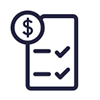Starting the journey to pick your first credit card is more than just an important step; it's the beginning of building a good credit history. Your first card shapes how lenders and financial institutions will view you in the future. Making the right choice can set a strong financial foundation, opening doors to better loan and mortgage rates.

How to Choose a Credit Card for the First Time
7 min read
Last Updated: March 12, 2025
Next steps

See if you're pre-approved

Learn about Discover student credit cards
See rates, rewards and other info
You may also be interested in
Was this article helpful?
Was this article helpful?


